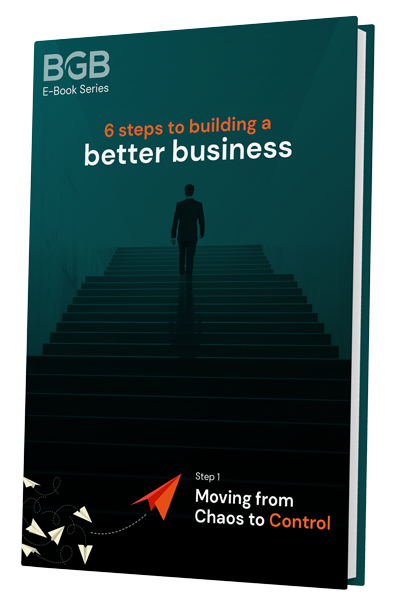Airline Captains put their aircraft in motion and then switch to autopilot. They are then free to take a nap or do a crossword puzzle while the plane flies safely all by itself. So, are you flying your business like a state-of-the-art Dreamliner, or more like a monoplane from the early 1900s?
Building Great Businesses has developed 9 steps to take your business processes and systems from zero to hero, so you can make more money and have more time. And isn’t that why you started your business in the first place?
How to create Business Systems?
Step 1. Set your Vision. First, ask yourself: “Why do I get up and come to this place?” and “Why does my business exist?” Make your vision aspirational so your staff and team are eager to get on board with it.
Step 2. Set your Mission. Ask “What do we do, and for who?” and “What makes my business so special?” Aim for 3 or 4 lines so it has some level of detail, to give management direction for decision-making.
Step 3. Develop a Culture Statement. The best businesses operate largely because of a strong and consistent culture. This ensures behaviours are consistent and clear, so that the team can live up to them. What systems or processes do you need to put in place to create a fantastic culture in your workplace?
Step 4. SMART Goals. Does the business have clear goals and does everyone in the business know what their goals are? Your goals must be SMART – Specific, Measurable, Achievable, a Result and Time-scaled. Getting clear on your goals and putting together a plan on how to accomplish them, multiplies your chance of success.
Step 5. Organisation Chart. Your Org Chart is a business system in itself. It should make reporting lines clear and provide clarity around each person’s role in the company and what they’re accountable for. If no one is accountable for it, there’s every chance it won’t get done!
Step 6. Position Commitment. There should be a Position Commitment for every role in the business, and it should articulate why that job exists. A Position Commitment should also list key activities, processes and outcomes that the role is Accountable. If your business is tiny, create an Org Chart with the full future of the business in mind, even if some boxes are blank right now!
Step 7. KPI’s. In order to track that the Position Commitments are being fulfilled, identify a handful of KPIs for each of them. What are the four to six things you can track or monitor (objectively) to know that a role is being done properly? This business process will motivate your team even when you are on holiday or out of the office.
Step 8 – Procedures Manual. Having procedures manual lets everyone know what needs to happen in each area of the business, so if one or more key people leave, the knowledge stays. They also give new employees a resource point while they are learning their roles. Putting these procedures manuals in place usually has the effect not only of making the business operate reliably but also of improving the way it operates.
Step 9 – Management Systems. Now that you have all your business systems and processes in place and the business is working perfectly, you might be close to putting your feet up or jetting off to your favourite location. But before you do, create an overarching management system including these three parts:
- A dashboard, which typically includes a maximum of 10 objective facts that indicate the health of the business, usually including profit, marketing effectiveness, productivity and customer satisfaction.
- Rewards and consequences for the team, for achieving or adhering to the business systems and processes. Make sure staff are aware of rewards and consequences.
- Scheduled meetings that perform specific functions to be held regularly, such as work-in-progress, half-yearly planning or even a daily huddle. These meetings need to be consistent and have a specific agenda.
In summary, the less about your business that is undefined, the fewer people will have to rely on you to answer their questions and help do their job every day.
Creating systems for your business is crucial to ensure that it runs smoothly and efficiently. By following the nine steps outlined in this article, you can develop a type of business process that is sustainable and scalable. Implementing business process automation can also help you streamline your operations, reduce errors, and save time and money. Whether you offer a product or service, having a well-defined vision, mission, culture statement, and SMART goals is key to success.
P.S. Whenever you are ready…
- Get the ‘finish your business’ checklist: The complete step-by-step recipe to have all the ingredients in place to actually finish your business. That means it works without you and gives you a great life. Click here.
- Join and connect with other entrepreneurs that are building great businesses: It’s our Facebook community where smart business owners are learning to get more customers, build winning teams and put their businesses on autopilot. Join now.
- Apply to become a member of BGB: If you would like to be considered for membership and go from working in your business to working on your business… send us a message and put ‘membership’ in the subject line… tell us a little about your business and what you’d like to work on together, and we’ll get you all the details.





